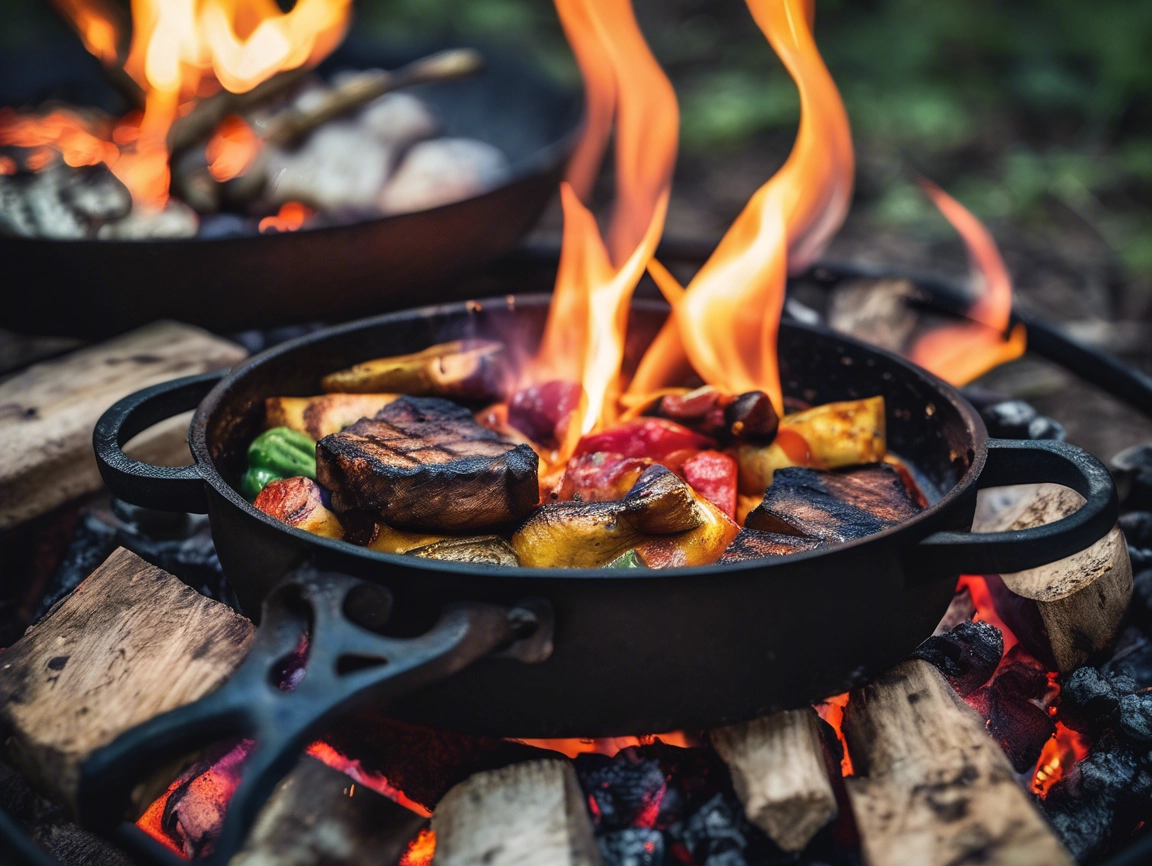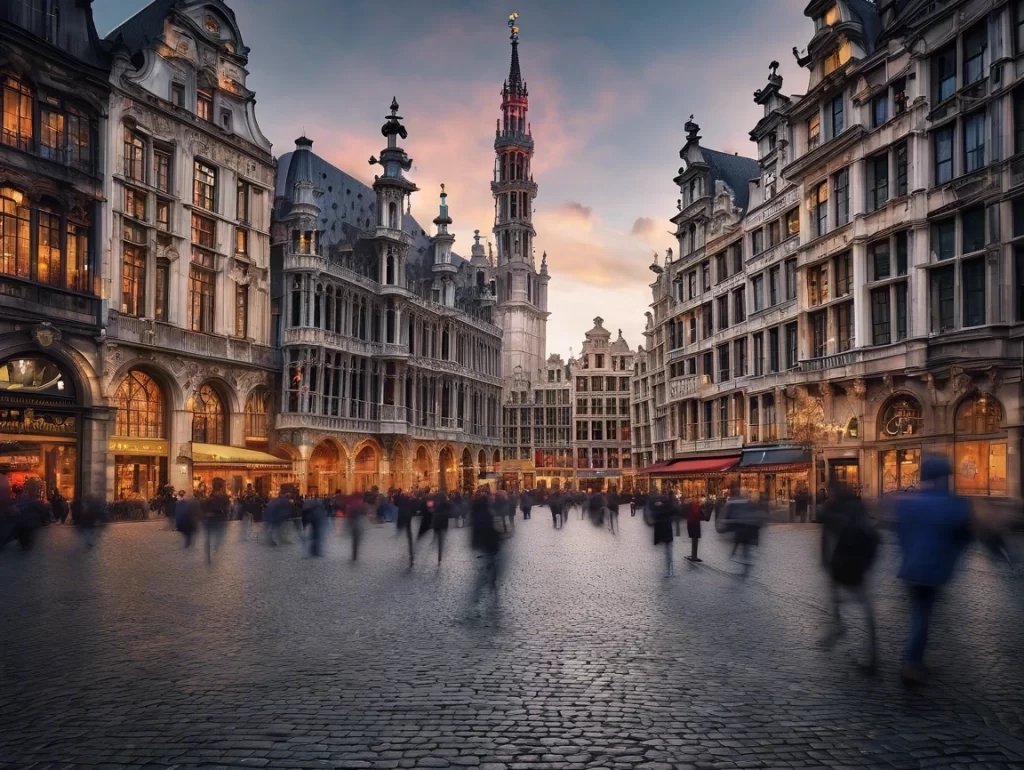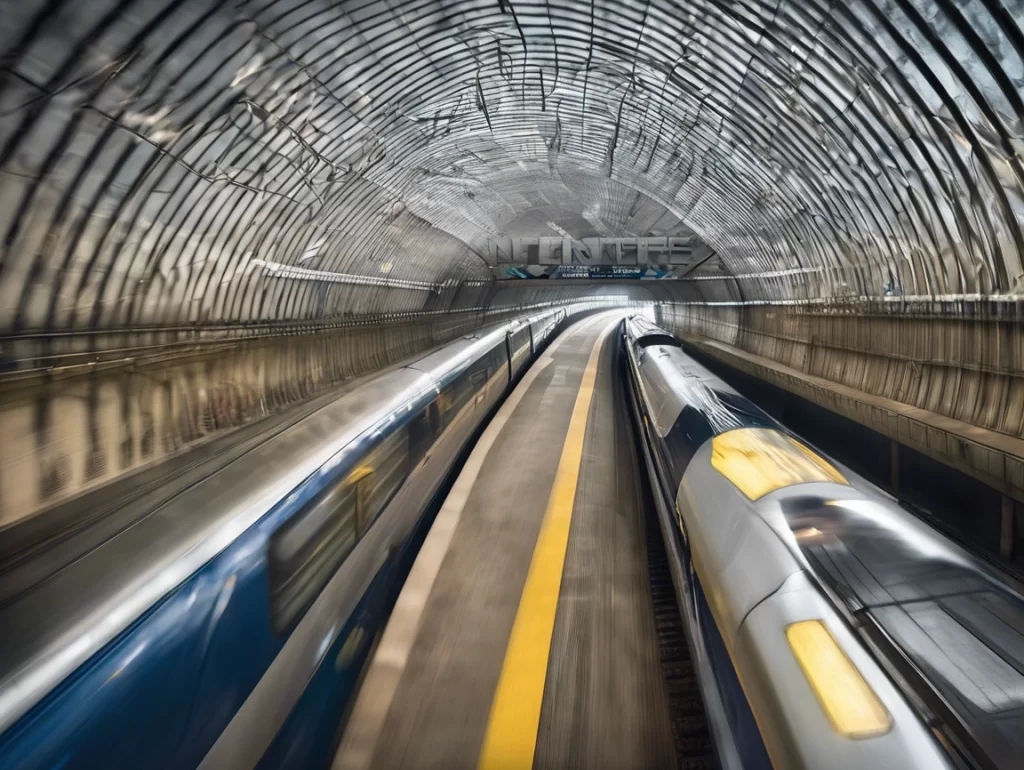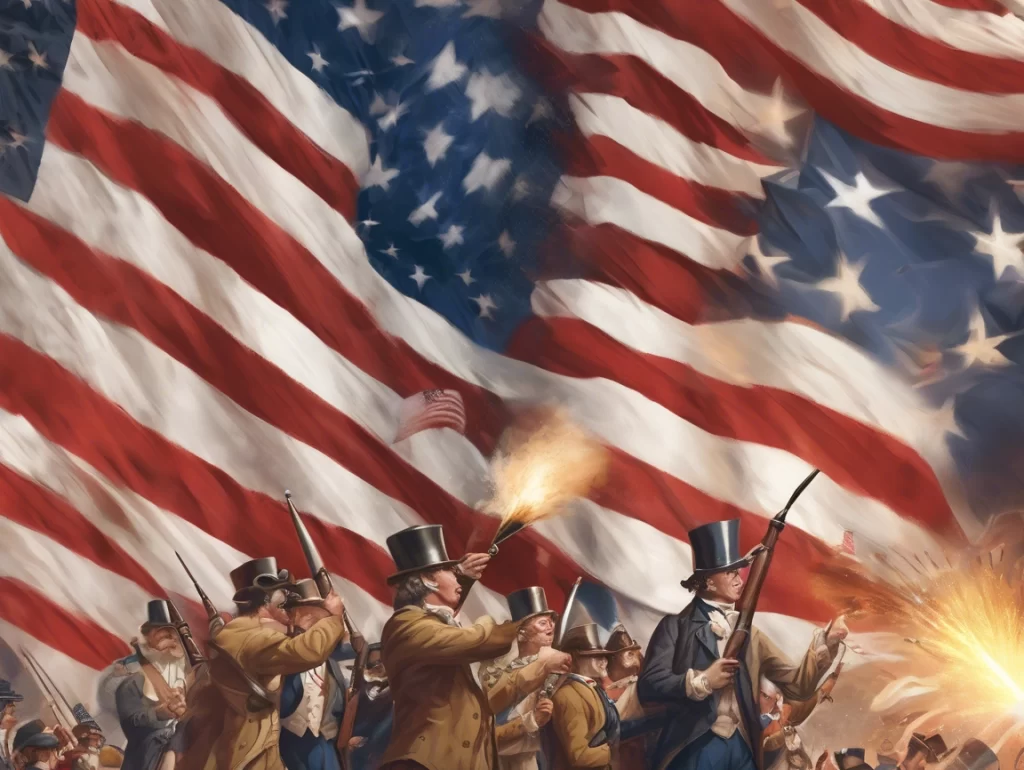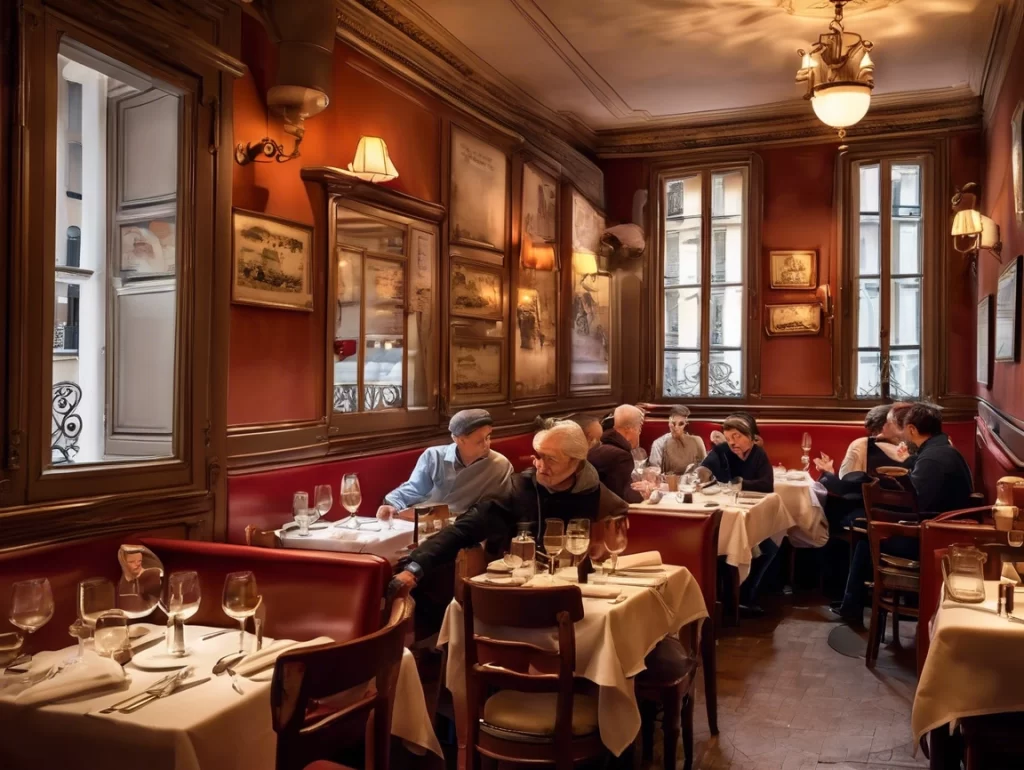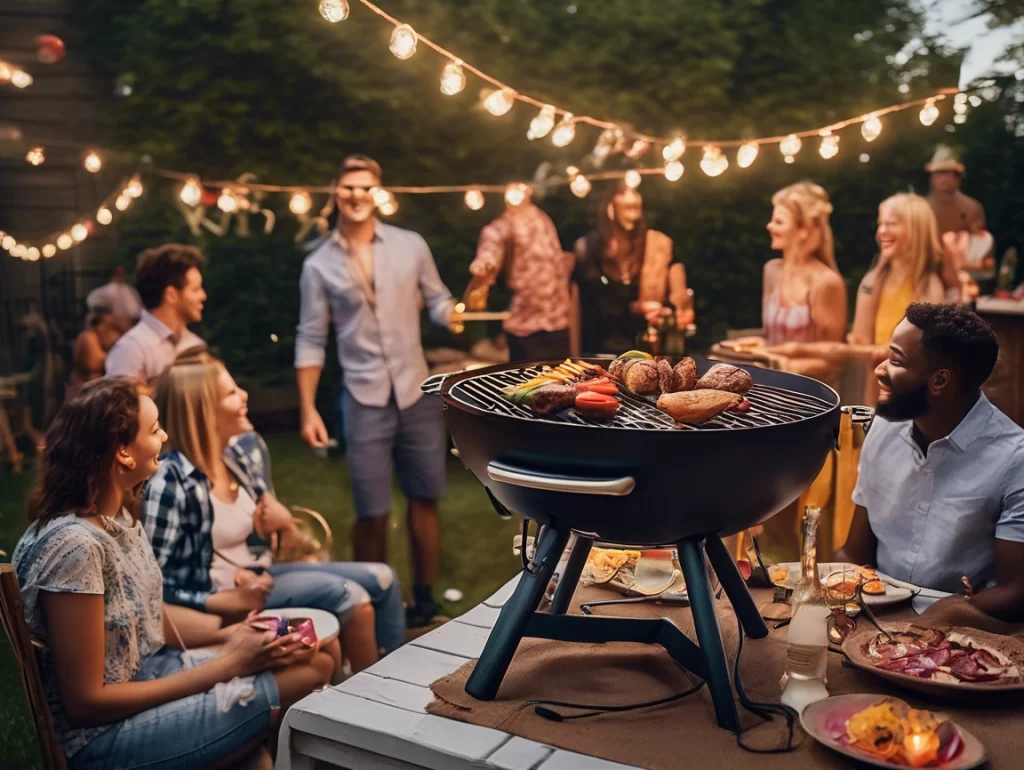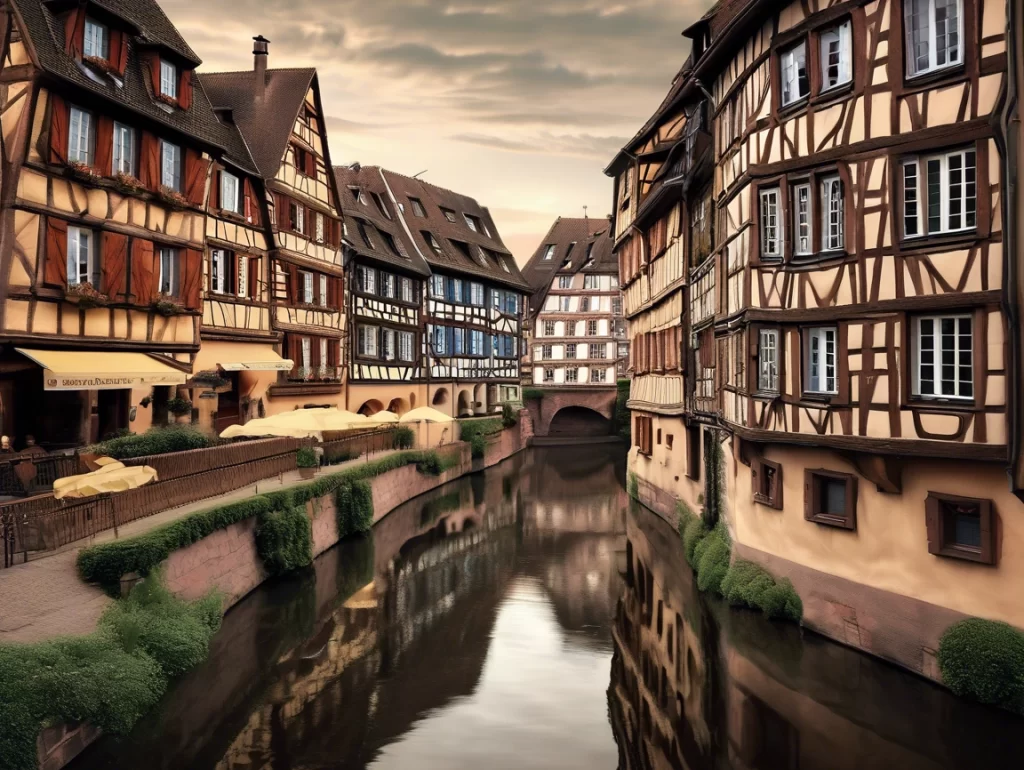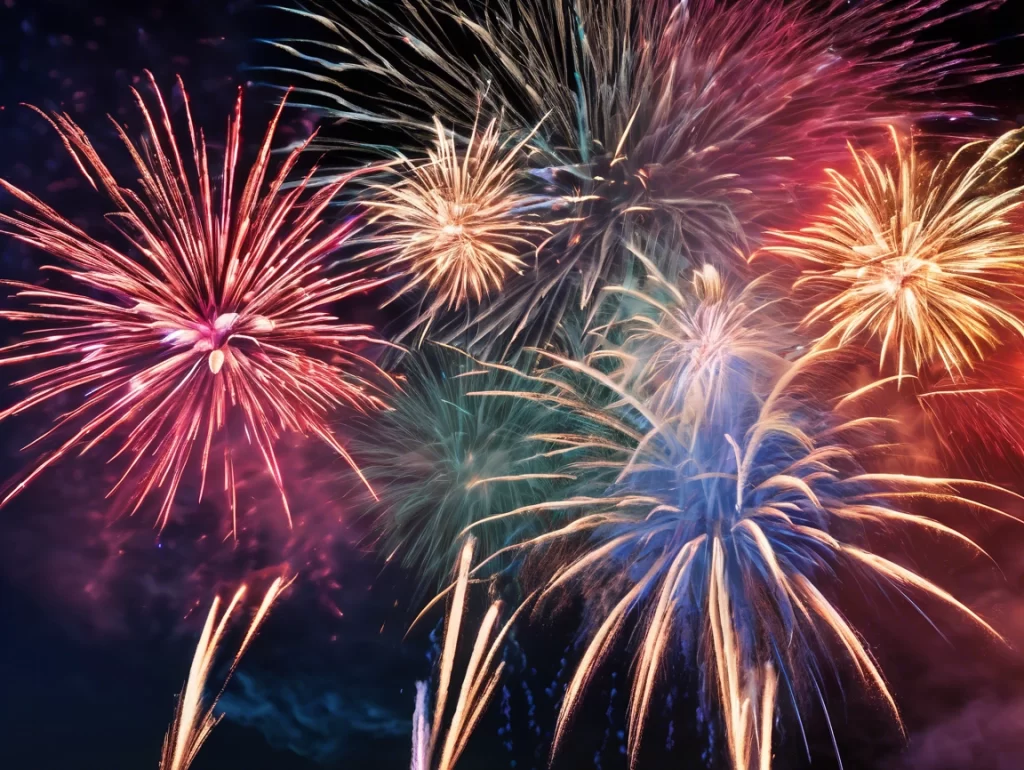Intro: From Sparks to Sizzle—It’s All Chemistry
Ever notice how food tastes better around a fire? There’s more to it than the fresh air or rustic vibes. The chemistry of campfire cooking is what truly transforms simple ingredients into smoky, savory masterpieces. From the sizzle of bacon in a skillet to the perfect golden crust on your marshmallow, this is where science and flavor collide—outdoors.
Let There Be Fire: The Science Behind Heat
Before we cook, we must understand fire. The classic triangle of fuel, heat, and oxygen is what makes your flame sustainable and safe.
- Wood chemistry: Different types of wood release distinct volatile compounds—like guaiacol and syringol—which add that signature campfire aroma to your foodTop 50 nerd-type topics….
- Combustion zones: The hottest part of a flame (blue zone) is best for searing, while the glowing embers below provide consistent radiant heat for roasting and slow cooking.
- Temperature control: Hardwood coals can reach 600°F+, ideal for baking in a Dutch oven or charring veggies on skewers.
? Looking for ideal campfire wood? Oak and hickory are kings of long-lasting, high-BTU burns (US Forest Service Guide).
Flavor on a Molecular Level: Maillard & More
That delicious crust on your camp burger or toasted marshmallow? Thank the Maillard reaction—the golden ticket to flavor town.
- Maillard reaction: A complex set of reactions between amino acids and reducing sugars at 280°F+ that creates hundreds of flavorful compounds.
- Caramelization: Happens when sugars break down under high heat, forming sweet, nutty flavors and brown coloring—hello, s’mores!
- Smoky enhancement: As fat from meat drips into flames, it creates flavorful aerosols that coat your food with complex phenols and aldehydesTop 50 nerd-type topics….
? “You’re not imagining it—grilled food has scientifically proven taste advantages,” according to Serious Eats.
S’more Than a Snack: A Chemical Love Story
Let’s break down the s’more—the crown jewel of campfire chemistry.
- Graham crackers: Slightly porous, they warm quickly and offer a toasty crunch that balances the gooey interior.
- Marshmallows: Heat causes the sugar to caramelize while gelatin expands, trapping air bubbles and making them delightfully fluffy.
- Chocolate: At around 90°F, cocoa butter begins to soften. The heat from the marshmallow melts it just enough for gooey fusion magic.
? This blend of textures and chemical reactions is why s’mores hit so many sensory notes—fat, sugar, aroma, and crunch all in one (National Geographic).
Gear That Guides the Reaction
To master campfire cooking chemistry, your gear matters:
- Cast iron cookware: Even heat distribution and non-stick seasoning layer built from polymerized oils.
- Grill grates and skewers: Elevate food above flame for controlled exposure to heat zones.
- Foil packs: Create mini-ovens using steam, ideal for potatoes or veggies.
- Dutch ovens: Excellent for convection-style heat cooking and one-pot meals.
Pro Tip: Use a thermal infrared thermometer to check wood coal temps without guesswork.
Final Thoughts: Savor the Science
Whether you’re flipping flapjacks or crafting gourmet grilled cheese in the woods, remember—the chemistry of campfire cooking is your secret ingredient. You’re not just making meals; you’re orchestrating molecules under open sky. And honestly? That’s about as nerdy and delicious as it gets.
? Hungry for more outdoor science? [Subscribe now] and [check out related topics] on Nerd It Forward.
